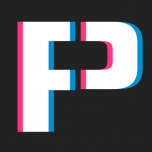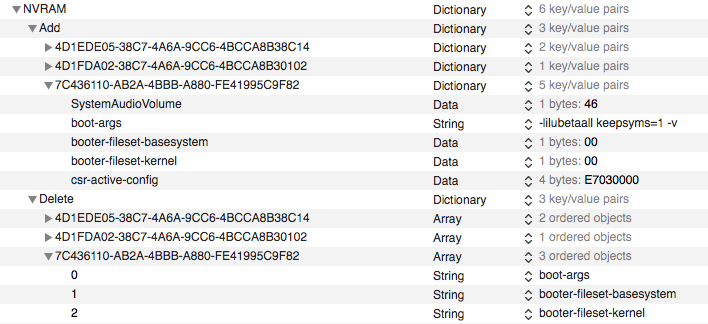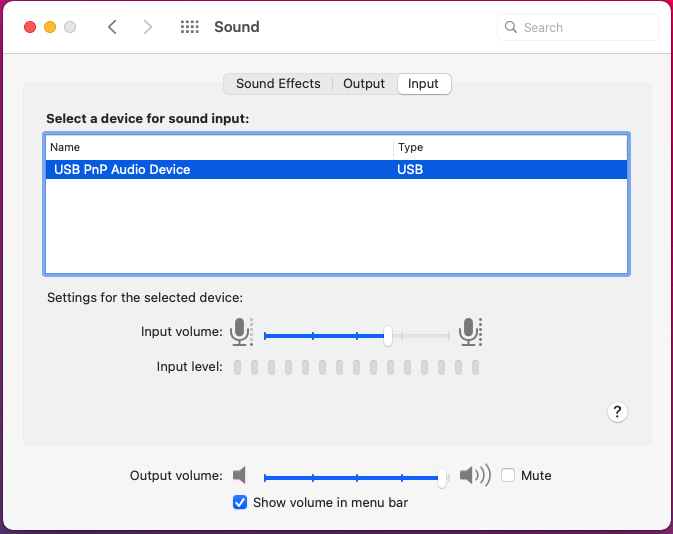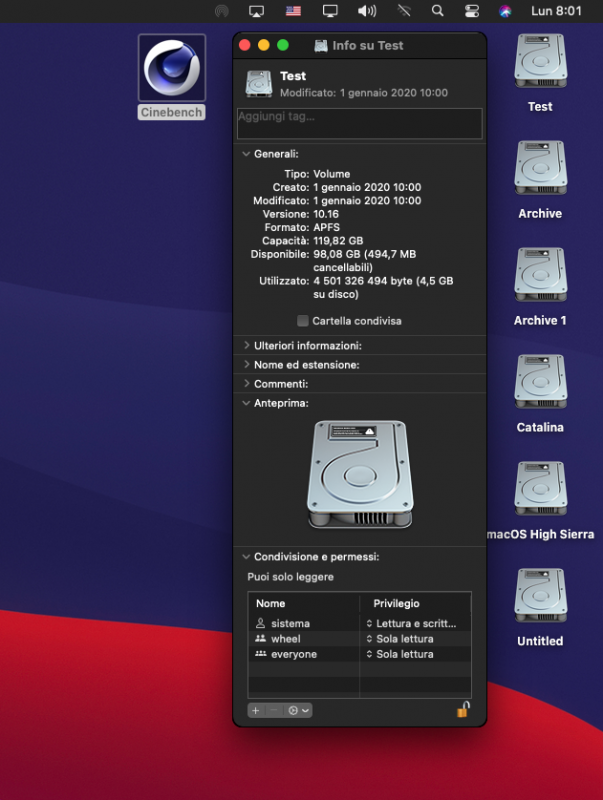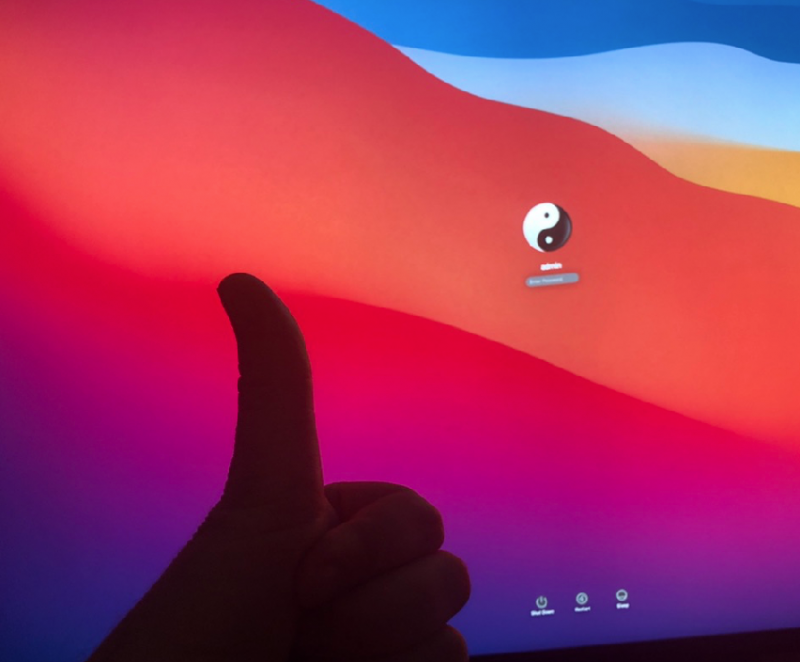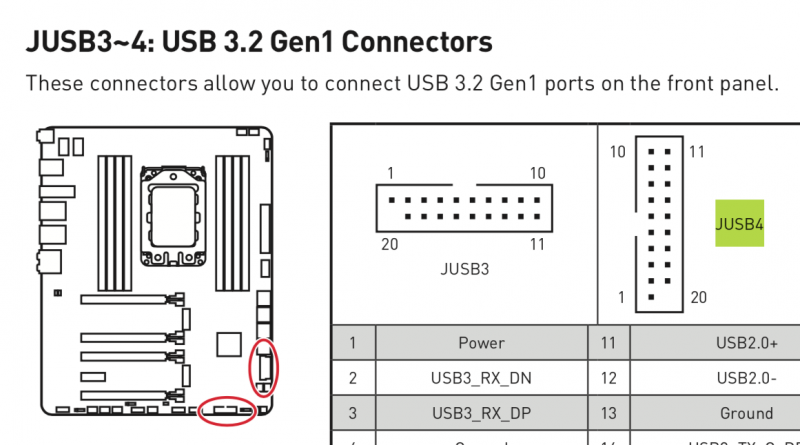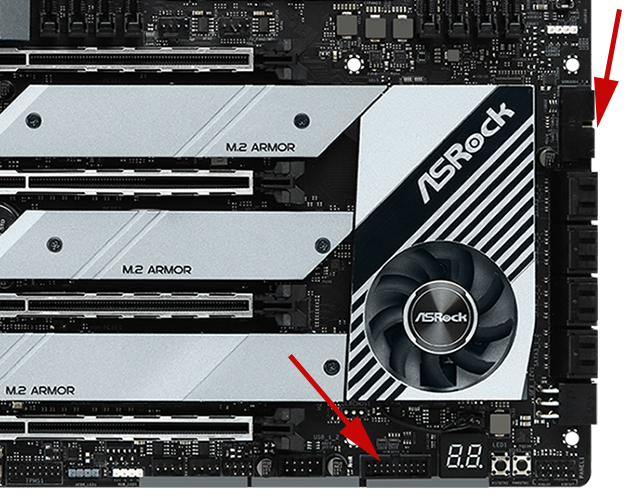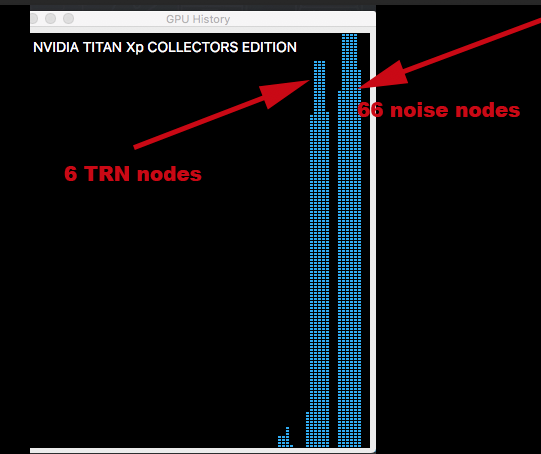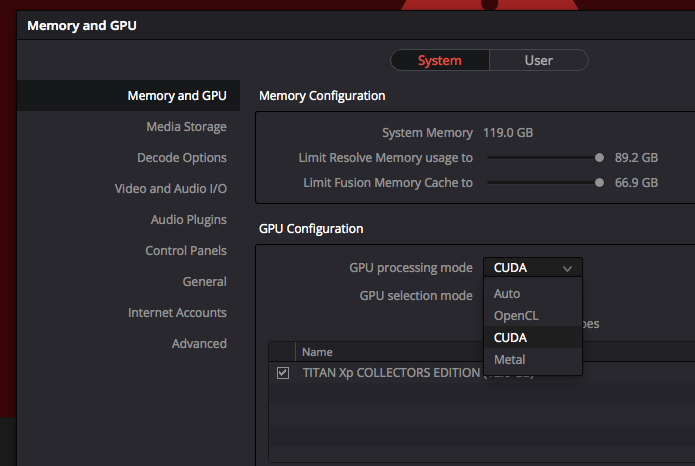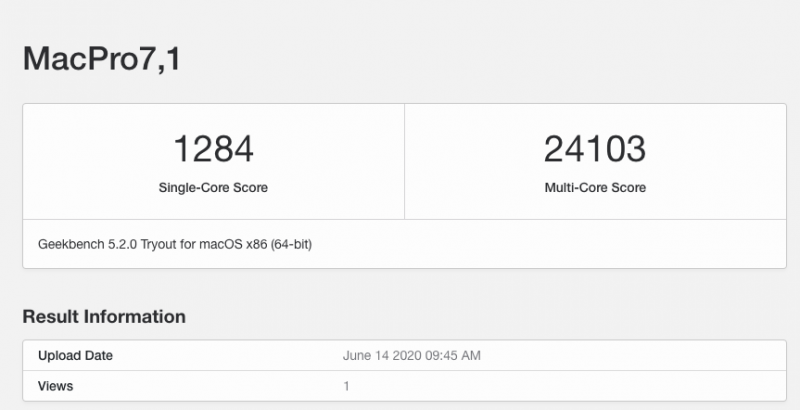Leaderboard
Popular Content
Showing content with the highest reputation on 02/08/2021 in Posts
-
Quando il tuo Mac si “sbaglia”, viene spesso chiamato "crash". Questo è un termine breve, succinto, ma non molto utile a capire cosa è andato storto e come risolverlo. Comprendendo cosa è successo e cosa è stato esattamente quel "crash", otteniamo importanti indizi su cosa fare dopo. Uscita imprevista macOS ha aree protette, incluso il kernel stesso, che le app non dovrebbero essere in grado di influenzare. Ogni app viene eseguita in uno spazio separato, separato da altre app e dallo spazio di sistema protetto. Quindi il tipo più comune di "crash" dovrebbe essere un'app che morde la polvere quando ha fatto qualcosa di sbagliato. Di solito l'app si chiude improvvisamente, per questo viene spesso definita chiusura imprevista. Le uscite impreviste possono verificarsi per molti motivi, ma i più frequenti sono i bug nell'app. Se un'app si chiude ripetutamente in modo imprevisto quando provi a fare la stessa operazione, allora puoi essere abbastanza sicuro che si tratti di un bug in quell'app e dovresti segnalarlo agli sviluppatori dell'app. Naturalmente questo non è necessariamente una questione di colpa: molti di questi bug si verificano quando l'app si aspetta che macOS faccia qualcosa in un modo, e non è così. È quindi probabile che ci sia un periodo in cui gli sviluppatori dell'app danno la colpa a Apple, Apple dice poco e alla fine il problema viene risolto tranquillamente. Quando un'app si chiude inaspettatamente, macOS e tutte le altre app in esecuzione non devono essere interessate, ma a volte l'app, quando sta per uscire, lascia alcuni danni a macOS, ai file archiviati o altrove. Quindi, anche se dovresti essere sicuro di continuare a lavorare e riaprire l'app che si è chiusa, fai attenzione a eventuali segni di comportamenti strani che indicano danni residui. Il riavvio del Mac normalmente lo cancella. Esistono anche diversi motivi per cui macOS ha forzato la chiusura improvvisa della tua app. Se ciò accade quando l'app tenta di avviarsi, ad esempio, potrebbe essere perché si è verificato un errore di firma, ha tentato di accedere alle risorse protette dalla privacy a cui non aveva diritto o un problema con il codice oi file dell'app . Sfortunatamente, nella maggior parte dei casi, sia che si sia chiuso da solo, sia che sia stato forzato da macOS, tutto ciò che vedrai sarà un rapporto sugli arresti anomali, che potrebbe invitarti a riaprire l'app o a inviarlo ad Apple. La lettura dei rapporti sugli arresti anomali è un'attività piuttosto specializzata e normalmente necessita di informazioni dettagliate sul funzionamento di macOS e dell'app che si è chiusa. Se hai la possibilità di inviare il rapporto ad Apple o allo sviluppatore, ti preghiamo di farlo, poiché ciò potrebbe significare che il suo sviluppatore ha la possibilità di vederlo. Se vuoi capire i rapporti sugli arresti anomali, questa vecchia Nota tecnica li spiega e c'è un'intera sessione del WWDC 2018 dedicata all'argomento. Spinning beachball, o hang Più comuni delle uscite inaspettate sono gli “spinning beachball” (palloni da spiaggia che girano). Queste sono occasioni in cui un'app riscontra un problema e visualizza il puntatore come un beachball rotante per indicare che ci sta lavorando. Ciò potrebbe essere dovuto al fatto che hai chiesto all'app di intraprendere qualcosa di enorme: la maggior parte delle app mira a inserire attività di lunga durata in un processo in background e mostrare uno spinner o una barra di avanzamento occupati, ma ciò non è sempre possibile. Finché il pallone da spiaggia non viene visualizzato per troppo tempo, dovresti lasciare che l'app si risolva da sola. I beachball che girano non sono di per sé un'indicazione affidabile che un'app è in difficoltà: il loro significato è semplicemente che l'app in primo piano è troppo impegnata nell'elaborazione per interagire con l'utente al momento. In molte circostanze, questo è abbastanza benigno e l'app è semplicemente impegnata a fare quello che volevi. A volte un'app sembra incapace di riprendersi dal beachball re si blocca, non risponde, consuma i cicli della CPU e non arriva da nessuna parte. Dovresti essere in grado di forzare la chiusura dell'app, quindi puoi riaprirla e provare un approccio diverso. Per farlo, premi contemporaneamente Comando-Opzione + Esc per visualizzare la finestra di dialogo Uscita forzata. Seleziona l'app che si è bloccata, che di solito è contrassegnata in rosso segno che non risponde, quindi fai clic sul pulsante Uscita forzata. L'app verrà quindi chiusa e potrai riavviarla quando desideri e utilizzarla. Questo dovrebbe ripulire tutto correttamente dopo aver forzato la chiusura dell'app, ma come per le chiusure impreviste, a volte lascia macOS e altre app in una situazione instabile, che richiede un riavvio. Quando forzi la chiusura di un'app e, talvolta, in altre occasioni, macOS potrebbe generare automaticamente un rapporto "spindump"; genera anche rapporti "microstackshot" in caso di problemi di prestazioni. Sfortunatamente, interpretarli è davvero possibile solo se capisci come funziona l'app e cosa stava facendo in quel momento. I beachball rotanti ricorrenti in diverse app e il Finder sono una buona indicazione di problemi più generali con macOS piuttosto che con quelle app. Questi si verificano più comunemente quando hai appena aggiornato o aggiornato macOS e suggeriscono un aggiornamento non riuscito o un grave conflitto interno, forse con qualche prodotto di terze parti incompatibile. Una possibile soluzione è avviare in modalità provvisoria (con il tasto Maiusc tenuto premuto), lasciare il Mac per un minuto o due, quindi riavviare in modalità normale. Se ciò non risolve il problema, prova a scaricare e installare l'ultimo aggiornamento Combo o a reinstallare quella versione di macOS, magari in modalità di ripristino. Le estensioni di terze parti e altri software di livello inferiore sono disabilitati in modalità provvisoria, quindi potrresti scoprire che i beachball scompaiono in quella modalità. Tuttavia, anche molte estensioni Apple sono disabilitate e potresti non essere in grado di eseguire molte delle tue app. Kernel panic Le prime versioni di macOS spesso non proteggevano abbastanza bene il kernel e altre parti centrali del sistema e un bug pernicioso in un'app poteva far crollare l'intero sistema. È ora più probabile che ciò si verifichi a seguito di un errore hardware, come un problema di memoria o un guasto improvviso di un disco. Nella forma classica (OS X 10.7 e versioni precedenti), l'intero schermo del Mac diventa grigio e un messaggio multilingue ti informa che macOS ha riscontrato un errore e deve essere riavviato: questo è un kernel panic. Da OS X 10.8 in poi, questo comportamento è cambiato e potresti non essere nemmeno informato del kernel panic. Invece, il tuo Mac potrebbe bloccarsi per un minuto circa, quindi riavviarsi spontaneamente o semplicemente spegnersi del tutto. A meno che tu non gli abbia detto di riavviare o spegnere, questo può essere solo il risultato di un kernel panic. Se il tuo Mac ha un kernel panic, deve riavviare e caricare macOS da zero: il kernel ha subito così tanti danni che non può ripristinarsi in nessun altro modo. Puoi saperne di più su come riconoscere e gestire un panico del kernel qui. Freeze Quando il kernel di macOS e le parti centrali del sistema collassano completamente, potrebbero non essere in grado di continuare abbastanza a lungo da avvisarti con un kernel panic, né da riavviare prontamente. Invece, il tuo Mac si ferma semplicemente come un morto nell'acqua: l'orologio si ferma, non puoi navigare tra le finestre, anzi normalmente non puoi nemmeno muovere il puntatore. Un sintomo interessante che potrebbe avvisarti di un tale blocco è che un Apple Magic TrackPad 2, che è gestito dal software, perde la capacità di fare clic e si sente "morto". Se incappi in un blocco, lascia stare il Mac per un minuto o due, poiché è probabile che si riavvii automaticamente. In caso contrario, è necessario premere e tenere premuto il pulsante di accensione fino a quando non lo si è forzato a spegnersi, attendere alcuni secondi, quindi riavviarlo. Non scollegare o spegnere mai l'alimentazione di rete, tranne in caso di grave emergenza, poiché ciò comporta un alto rischio di causare danni permanenti al tuo Mac, sia al suo software che possibilmente al suo hardware. Come il kernel panic, dovresti vedere un blocco solo se hai un problema hardware. Tuttavia, le versioni successive di El Capitan (10.11.4 e successive) sono note per causare ripetuti blocchi sporadici su alcuni modelli di Mac, inclusi alcuni iMac e MacBook Pro. Questo è stato risolto correttamente solo con il nuovo kernel fornito in macOS Sierra, che per la maggior parte degli utenti è molto più robusto. Sono stati segnalati blocchi anche su alcuni modelli con determinate versioni di firmware. Problemi associati a eventi specifici L'arresto anomalo che si verifica durante l'avvio può essere particolarmente difficile da individuare, soprattutto se impedisce al tuo Mac di avviarsi completamente. Gravi problemi che lasciano il tuo Mac con uno schermo colorato uniforme, in genere nero o blu, di solito indicano un guasto hardware, come una scheda grafica difettosa. I problemi minori vengono spesso risolti riavviando in modalità provvisoria, con il tasto Maiusc tenuto premuto; questo disabilita la maggior parte del software di terze parti e può consentire di capire cosa si sta verificando e affrontarlo. Un altro momento critico in cui si verificano problemi è al “Wake from sleep” (risveglio dal sonno). Ciò normalmente richiede che macOS riattivi l'hardware e potrebbe essere necessario caricare driver e altro software di basso livello. Può provocare uno qualsiasi dei suddetti tipi di incidente. È più insolito andare in crash quando si va in Sleep, ma questo è un altro indicatore utile che può aiutare a restringere la causa. Gli indizi più importanti di tutti? La maggior parte degli eventi di cui sopra vengono registrati con informazioni dettagliate nei log del tuo Mac. In El Capitan e versioni precedenti, puoi sfogliare quelli che utilizzano Console, ma purtroppo Sierra ha introdotto un nuovo sistema di registrazione e Console ora ha un valore molto limitato. Se utilizzi Sierra o versioni successive, dovrai usare applicazioni di terze parti, ma questo è un’altro discorso. (Cit. EclecticLight)2 points
-
1 point
-
Ciao. Di solito i Lenovo hanno un piccolo tastino laterale che se premuto (a notebook spento) ti consente di accedere al bios. Verifica i vari parametri compresa la modalità uefi1 point
-
Ciao ragazzi ,qualora non ne foste al corrente ho trovato una guida che permette di mettere gli stessi screensaver della Apple TV (quelli fighi 😜) anche su mac/hack . Qui di seguito posto la guida : https://github.com/JohnCoates/Aerial @Gengik84 spero di aver fatto cosa gradita e di non avere sbagliato sezione 🙂1 point
-
You can download a prebuilt EFi with VM assistant, see help for How to1 point
-
about sleep in "our" system Proxmox / OSX When OSX goes to sleep if you see via web interface our vm status, you will see an orange icon near a suspend button To wake up our osx you have to "un" suspend Proxmox VM status Remember..we are a guest in a linux system and we can't off entirely our PC.. because theoretically the PC also supports other possible VMs and it is not possible to completely shut it down as happens in a Vanilla hack Then when we awaken it with the help of the web interface, we could have the same problems related to the usb and the monitor as on a traditional hack1 point
-
When you say no go.. could you post error message do you see? About more than 64 cores used in your vm config thank you1 point
-
@meina222 to download big sur you can use Vm assistant command from terminal you can find in forum download area you can also use run me downloader app you can find in a thread here or in @Gengik84 signature or here https://www.macos86.it/applications/core/interface/file/attachment.php?id=196621 point
-
on amd-osx discord a user (ᕲᑘ'ᓰSᒪᓰᘉᘜᖇ) shared a link with latest kernel useful for Proxmox: https://github.com/fabianishere/pve-edge-kernel tested by now without problem, maybe it could be useful to solve reset bug in AMD Gfx? (I do not know) Last login: Sat Jul 18 05:56:24 CEST 2020 on tty1 Linux pve 5.7.8-1-zen2 #1 SMP 5.7.8-1-zen2 (Fri, 10 Jul 2020 15:39:00 +0200) x86_64 The programs included with the Debian GNU/Linux system are free software; the exact distribution terms for each program are described in the individual files in /usr/share/doc/*/copyright. Debian GNU/Linux comes with ABSOLUTELY NO WARRANTY, to the extent permitted by applicable law. root@pve:~# pveversion -v proxmox-ve: 6.2-1 (running kernel: 5.7.8-1-zen2) pve-manager: 6.2-9 (running version: 6.2-9/4d363c5b) pve-kernel-5.4: 6.2-4 pve-kernel-helper: 6.2-4 pve-kernel-5.4.44-2-pve: 5.4.44-2 pve-kernel-5.4.44-1-pve: 5.4.44-1 pve-kernel-5.4.41-1-pve: 5.4.41-1 pve-kernel-5.4.34-1-pve: 5.4.34-2 ceph-fuse: 12.2.11+dfsg1-2.1+b1 corosync: 3.0.4-pve1 criu: 3.11-3 glusterfs-client: 5.5-3 ifupdown: 0.8.35+pve1 ksm-control-daemon: 1.3-1 libjs-extjs: 6.0.1-10 libknet1: 1.16-pve1 libproxmox-acme-perl: 1.0.4 libpve-access-control: 6.1-2 libpve-apiclient-perl: 3.0-3 libpve-common-perl: 6.1-5 libpve-guest-common-perl: 3.0-11 libpve-http-server-perl: 3.0-6 libpve-storage-perl: 6.2-3 libqb0: 1.0.5-1 libspice-server1: 0.14.2-4~pve6+1 lvm2: 2.03.02-pve4 lxc-pve: 4.0.2-1 lxcfs: 4.0.3-pve3 novnc-pve: 1.1.0-1 proxmox-mini-journalreader: 1.1-1 proxmox-widget-toolkit: 2.2-9 pve-cluster: 6.1-8 pve-container: 3.1-10 pve-docs: 6.2-4 pve-edk2-firmware: 2.20200531-1 pve-firewall: 4.1-2 pve-firmware: 3.1-1 pve-ha-manager: 3.0-9 pve-i18n: 2.1-3 pve-qemu-kvm: 5.0.0-10 pve-xtermjs: 4.3.0-1 qemu-server: 6.2-9 smartmontools: 7.1-pve2 spiceterm: 3.1-1 vncterm: 1.6-1 zfsutils-linux: 0.8.4-pve1 root@pve:~#1 point
-
so maybe also this: AvoidRuntimeDefrag should be set to No now.. in my case is on NO1 point
-
In the stage of your latest and initial hang as you show in screen capture do you have vsmcgen =1 in your config?1 point
-
hi @Driftwood I do not know if it is related to radeon (maybe connected also to reset bug??) or bios different settings of AsRock and Gigabyte mb (which seem to have the chance to go deeper than MSI during settings cpu and others parameter) I can only say that I use a single VM config file to boot High Sierra, Mojave, Catalina and latest Big Sur Beta 2. Also my EFi is the same for all (one EFI allows to boot properly in all system above) In OSX above High Sierra I have limitation you know because I have no GPU driver for them It would be interesting if other users with MSI or Asus board have the same problem or not1 point
-
1 point
-
Then I will do a video to prove that in my system Big Sur starts with host in vm with latest oc then if you say to nick I hope he will give proper credits this time 😜1 point
-
@Rox67er if our trx40 could boot without those kernel patches with host...we had had aN Apple supported chip in our rig😊😊 More than vanilla I mean😂1 point
-
@Driftwood I have said to Pavo all I did in discord message i use the same my config for all OS X no osk host on both args and vm device 060 opencore version you can download it with Vm assistant -doc nothing more1 point
-
Thank you for this and welcome here. You can find others usuful informations here: https://www.macos86.it/topic/2509-guide-trx40-osx-bare-metal-proxmox-setup62-1-updated-29-06-2020/ And see some videos here about our trx40 chip https://m.youtube.com/channel/UCN_fzD5ZSF8W3kaVWLUd5Aw/videos?disable_polymer=1 Waiting for your progress in big sur installation to see if cores limit is in it also as old Osx system maybe it could be useful also for you efi i used to install it from scratch. you can find and download using @Gengik84 app VM assistant you can find in download area of this forum1 point
-
About Enermax Liqtech TR4 II I have bought one from amazon and also one from warehouse The unused one has the opening of the box on the short side while the warehouse one on the long side. The one used has the instruction booklet with the copyright of 2018 on the last page The new one does not have this indication. Are there also different models of the second version of this AIO?1 point
-
I have always checked in disassembled kernel max cpu init as pikeraplha said some time ago to check from my old dual xeon 2696 V4 dual rig. This is "how to.." 1.) otool -tVj /S*/L*/Kernels/kernel > kernel-disassembled.txt 2.) open kernel-disassembled.txt 3.) Search for: “_ml_init_max_cpus:” 4.) Look for: “cmp rcx, 0x3f” 0x3f means 63 (counting from 0 we have 64 cores/threads) I think if Big Sur is really new and built for apple silicon cpu..maybe they have unlocked this part1 point
-
OT do you know people with a 3990x using hackintosh? i was researching on kernel code the usual 64 cores /threads limitation we have on all osx till catalina i cant find this core limitation in big sur kernel.. have you some info about this?1 point
-
update to latest kernel using shell command: apt update && apt dist-upgrade pveversion -v output: root@pve:~# pveversion -v proxmox-ve: 6.2-1 (running kernel: 5.4.44-2-pve) pve-manager: 6.2-9 (running version: 6.2-9/4d363c5b) pve-kernel-5.4: 6.2-4 pve-kernel-helper: 6.2-4 pve-kernel-5.4.44-2-pve: 5.4.44-2 pve-kernel-5.4.44-1-pve: 5.4.44-1 pve-kernel-5.4.41-1-pve: 5.4.41-1 pve-kernel-5.4.34-1-pve: 5.4.34-2 ceph-fuse: 12.2.11+dfsg1-2.1+b1 corosync: 3.0.4-pve1 criu: 3.11-3 glusterfs-client: 5.5-3 ifupdown: 0.8.35+pve1 ksm-control-daemon: 1.3-1 libjs-extjs: 6.0.1-10 libknet1: 1.16-pve1 libproxmox-acme-perl: 1.0.4 libpve-access-control: 6.1-2 libpve-apiclient-perl: 3.0-3 libpve-common-perl: 6.1-5 libpve-guest-common-perl: 3.0-11 libpve-http-server-perl: 3.0-6 libpve-storage-perl: 6.2-3 libqb0: 1.0.5-1 libspice-server1: 0.14.2-4~pve6+1 lvm2: 2.03.02-pve4 lxc-pve: 4.0.2-1 lxcfs: 4.0.3-pve3 novnc-pve: 1.1.0-1 proxmox-mini-journalreader: 1.1-1 proxmox-widget-toolkit: 2.2-9 pve-cluster: 6.1-8 pve-container: 3.1-10 pve-docs: 6.2-4 pve-edk2-firmware: 2.20200531-1 pve-firewall: 4.1-2 pve-firmware: 3.1-1 pve-ha-manager: 3.0-9 pve-i18n: 2.1-3 pve-qemu-kvm: 5.0.0-10 pve-xtermjs: 4.3.0-1 qemu-server: 6.2-9 smartmontools: 7.1-pve2 spiceterm: 3.1-1 vncterm: 1.6-1 zfsutils-linux: 0.8.4-pve11 point
-
@iGPU thanks to your settings I can say now weird sound is related with cpu fan speed I will try more these settings but I can also say I like this way, fan are ramping only when I need more fan cooling thank you again1 point
-
Usually I update via Apple store/internal software update without problems @cj7501 point
-
@Driftwood I was curious about acquantia problem with Big Sur because I have not with it. problems for first beta 1 was related to the bootloader and vm config (kernel and cpu type). with latest oc I have installed from scratch without modify my vm config which is the same for all OS X I have installed when you have done with the guide I will very happy to read and maybe with it I could improve also my old one👍1 point
-
I think also she is improving "her" methods reading our progress.. but in her inital videos you can see a virtualized ethernet..and also a orange icon for her catalina disk She declared also she does no like Unraid so maybe another Linux distro1 point
-
if you see i have asked her why she does not use internal card but cheaper HDMI/dp audio from her cheaper monitors.. she answered " i have not speaker connected" 🙂 funny 🙂 however she said an intersting thing answering to some users She does not use any bootloaders... we will see "her" methods from about ten episodes from now 🙂 🙂1 point
-
@paulthesparky I think @iGPUhave had success with his x570 rig many time ago..for now problem is with trx40/proxmox/linux combinations1 point
-
Yesterday with the help of @Gengik84i did a fresh installation on my system of Big Sur using a beta version of VM assistant app now available in download section. I have downloaded Big sur complete installation app and converted in an iso file with VM. i have created a copy of my standard VM.conf file(100.conf) renamed it in 102.conf and modified cpu host to Penryn and also boot args with that ones you can find in original guide with OSK and others args. uploaded on proxmox Big sur iso and created a cdrom for it in web interface as usual. in this way is possible to start with opencore and execute first and second installation steps. then i have replaced again cpu host and boot args with my original used ones and system boots fine in big sur So now i have done a fresh installation also in Proxmox using only original Apple installation big sur app. tested on a sata disk and also in a vm disk (512gb/48gb)1 point
-
@Driftwood I have used the same proxmox configuration and I use only a single EFI to boot in HighSierra, Mojave, Catalina, Big Sur No new guide needed I think. It is only "tricky" by now how to install 'cause Opencore needs some adjustment I think if you want use a "traditional" installer. If you have a real Mac dmg or a vm dmg of Big Sur, you can install as I said above (on a windows pc via transmac) and then using your actual opencore efi with only those adding I posted above 🙂 I can't do many things because I have the same Nvidia as before..to surf on web, audio and others stuff are working the same as I have in Catalina OS1 point
-
1 point
-
1 point
-
1 point
-
@iGPU@all liquid cooling owners on this beast 🙂 could you check temperatures during cinebench 20 (4 run) and maybe during Logic Pro benchmark or more similar bench which stress a bit our cpu? I am convinced that air is not enough for our cpu..also with a pretty good as Noctua or Dark pro tr4 cooling system Thank you I have no problem..but temperature during long benchmark can pass easily 90° (celsius)1 point
-
1 point
-
@iGPU thank you for testing have you unlocked FPS in project settings? it seems capped at 24 FPS you have to put a value different from default project FPS value like 200 FPS instead default ( it is 24 by default) You can also test with 6 Trn nodes and with 66 noise node as you did before1 point
-
those controllers are 3.1 and maybe 3.2 the right ones Catalina sees one of them as USB2 if you insert on them also USB3 devices In high Sierra all ports are seen as USB2 (internal, external, back and so on) I think it is driver related and also a proxmox cfg file used for compatibility with old ports type1 point
-
1 point
-
@Driftwoodif you not pass 46:00 in my case or 48:00 in your you can pass audio as device in proxmox web interface but, if you have problem this way does not solve it about audio pulse audio is a different thing and surely is not supported by our loved OS X system1 point
-
you will be surprised.. if you do want a "definitive" job in this task..try to put on each usb an usb pen 3 and an usb 2 pen..and see how system detects it (if)1 point
-
I know you are not interested in those usb (by the way, audio for our motherboards is a bit different from others system like x570 chipset) I was quoting you because @Rox67erdid a precise question about two usb controllers..and both of them need FLR patch (1022:148c id) I am also very surprised from your Opencore EFI, two aspects should be clarified for others users (ie ALS ssdt useful for what in your rig and other stuff like 7.1 SMBIOS misconfiguration ram popup problem if you are not using any kext o stuff to avoid this well known problem) interesting the AGESA part of your message..if true, it is another little step to patch less things possible and have a perfect proxmox/OSX system! I have to try also with mine 1.0.04 agesa MSI firmware @iGPUwhen you loose GUI shell interface I think is also possible to boot with a minimal working shell during blu Proxmox menu choice if you do not ave automatise all the booting process Also I would like to say that AppleALC.kext is not necessary for USB audio, also for integrated one (Realtek 2.0 audio) or a cheaper USB audio pen In my case Apllealc is useful for hdmi/dp audio toghter Nvidia web driver correct installation process1 point
-
1 point
-
hi @GDSwelcome here I remember a bit our discussions years ago! 🙂 You are the first one participating here with an Asus motherboard and most difficult task with a dual GFX chipset rig to configure I think you will happy of your results if you will be able to solve little problem you could have 🙂 All softwares you use should work at its best in Proxmox/OSX..I have some doubt about dual gpu (different gpu) but it is a good challenge )1 point
-
According to your results it is as it should be. So if it is stable you have reached your goal😊 now it is only a job for proxmox Linux kernel Programmers to improve some things as usb or audio incongruences we may have in some circumstances..and maybe Apple OS X software engineers😂1 point
-
1 point
-
1 point
-
1 point
-
1 point
-
1 point
-
I have this: IOMMU Group 49: 42:08.0 PCI bridge [0604]: Advanced Micro Devices, Inc. [AMD] Device [1022:57a4] 46:00.0 Non-Essential Instrumentation [1300]: Advanced Micro Devices, Inc. [AMD] Starship/Matisse Reserved SPP [1022:1485] 46:00.1 USB controller [0c03]: Advanced Micro Devices, Inc. [AMD] Matisse USB 3.0 Host Controller [1022:149c] 46:00.3 USB controller [0c03]: Advanced Micro Devices, Inc. [AMD] Matisse USB 3.0 Host Controller [1022:149c] with: 42:08.0 PCI bridge [0604]: Advanced Micro Devices, Inc. [AMD] Device [1022:57a4] Kernel driver in use: pcieport 46:00.1 USB controller [0c03]: Advanced Micro Devices, Inc. [AMD] Matisse USB 3.0 Host Controller [1022:149c] Subsystem: Advanced Micro Devices, Inc. [AMD] Matisse USB 3.0 Host Controller [1022:1486] Kernel driver in use: vfio-pci Kernel modules: xhci_pci 46:00.3 USB controller [0c03]: Advanced Micro Devices, Inc. [AMD] Matisse USB 3.0 Host Controller [1022:149c] Subsystem: Advanced Micro Devices, Inc. [AMD] Matisse USB 3.0 Host Controller [1022:148c] Kernel driver in use: vfio-pci Kernel modules: xhci_pci these results without adding lines on vfio.conf or in blacklist.conf1 point
-
Have you a link to buy also metal case because I have not it and it seems safer to mount a Wi-Fi bt in an original metal case1 point

